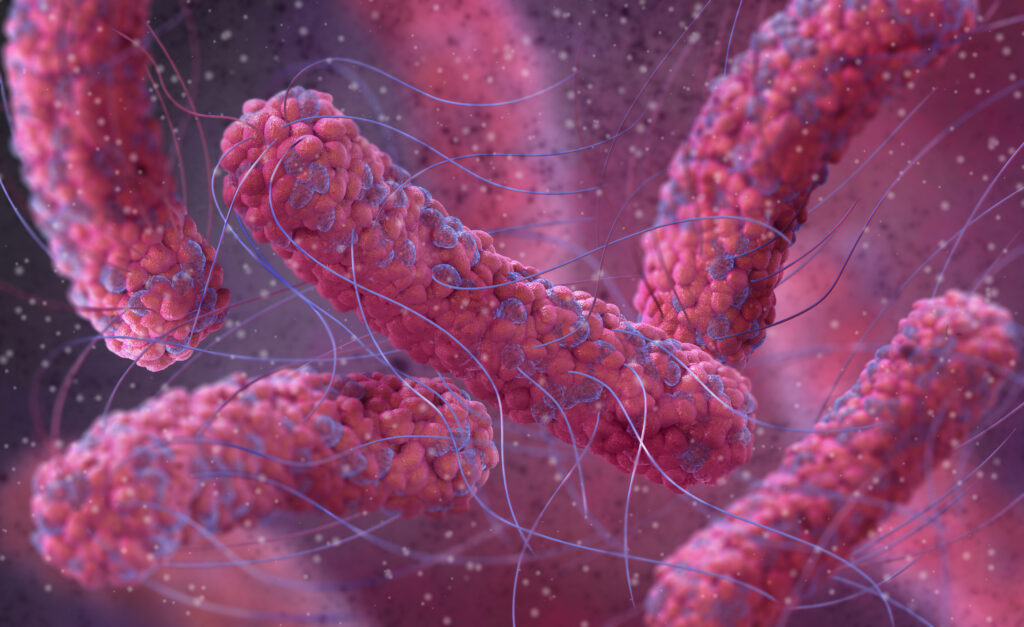This is the third of five posts in which I reply to Dr. Ian Musgrave’s “Open Letter to Dr. Michael Behe” on the Panda’s Thumb blog.
In my reply to Smith I quoted from a review (3) which asked the question why, with so much genetic variation, do we just see “interesting variations” in biological properties. Smith, replying to me on her blog in high dudgeon, quotes the next paragraph of the review which details some of those interesting variations:
The long terminal repeat region (LTR) of the HIV genome regulates transcription and viral replication, acting as a promoter responsive to the viral Tat protein. Although all subtypes share the same LTR function, they differ with respect to LTR sequence structure, basal activity and response to cytokines and transcription factors [95]. The majority of HIV-1 group M subtypes contain two nuclear factor binding sites (NF-kB). A minority of subtype C contain an extra NF-kB that may promote replication in the presence of TNF-and chronic immune activation [135]….
Smith remarks, “You know, that kinda looks like my essay, except looking at LTRs instead of Vpu.” She means that she views these as significant as the changes in Vpu she pointed out in her original essay. I agree with her, but think that biochemicallynone of them are all that significant. (One possible point of miscommunication is that I’m concentrating on the biochemical machinery of the virus, while Smith is more concerned with epidemiological factors. As she writes: “Im trying to figure out thephysiological and epidemiological impact of the changes. Im hoping that I can figure out a genetic determinate of transmission, narrowing down the epitopes a potential vaccine would need to contain. Everybody is trying to figure this kind of thing out now in the HIV research world.” That focus is certainly critically important for public health, but it’s not the same question as how do complex biochemical systems arise.)
One must remember that because of HIV’s mutation rate of 10-4, and because of its large population size (109-1010 per individual), multiple mutations in a single virus will occur much more frequently than for cells. For example, in general, all possible double point mutations will occur in a single virus in a single individual every day. All possible triple point mutations will occur in a population of a hundred individuals every month or so. All possible quadruple point mutations will occur in a population of a million individuals every month. All this means that multiple amino acid mutations or nucleotide changes in signaling sequences are easily achieved in HIV. Because of their much lower mutation rate, however, cells cannot match those numbers.
In the paragraph she quotes above from the review, since the transcription factor binding sites are rather short, since HIV has such a large mutation rate, and since duplicating a binding site is certainly not an unusual feat, all of these are what I would call “genome drift” — minor variations on a theme, not something to crow about after 1020 replications and a greatly enhanced mutation rate. In my view Smith and other Darwinists are much too easily impressed. As the review mentions after enumerating these changes: (3)
Although there are clear differences in LTR sequences and basal replication capacity among subtypes, the influence of these molecular level changes on specific subtype epidemics and the global spread of the virus remain uncertain.
In other words, even though it may affect epidemiological properties unpredictably, the frantic variation of HIV seems to occur within a very restricted envelope of biochemical possibilities.
In her original post Smith writes further:
It turns out that one of the biochemical differences is that Subtype B Vps have a Golgi retention signal in the second alpha-helix of the cytoplasmic domain.
Ian Musgrave mentions this too:
HIV-1 Vpu has a new binding site, YRKL in the cytoplasmic alpha helical section, not present in SIVcpz Vpu, which efficiently targets Vpu to the Gogli complex, making the degradation process more efficient. Can you please explain why the appearance of a new targeting motif in HIV-1 Vpu is NOT an example of a new binding site.
But, although not identical, SIV variants have similar sequences at the same location (2): YKRN; WKRN; WRQI; etc. Given the mutation rate of HIV of 10-4, and the fact that an infected individual carries 108-109 viral copies, the conversion of an SIV variant into the Golgi retention signal YRKL could take place with relative ease: perhaps one such de novo mutant per year in a population of ten thousand organisms. If it gave a selective advantage, there would be no problem for this arising by Darwinian means.
At this point I should perhaps remind Dr. Musgrave that the title of my book is The Edge of Evolution. In it I explain that Darwinian processes can do some things, but not others, and I try to find a rough dividing line. As I emphasize, that means one has to makedistinctions between categories. A virus like HIV, with its small genome size and much greater mutation rate, has to be considered differently from cells with their larger genome sizes and lower mutation rates. As a rule of thumb, HIV can acquire two specific point mutations as easily as a cell can acquire one. And with its great population size, it would be child’s play for HIV to alter many signaling sequences. To answer Dr. Musgrave’s question, I wouldn’t list this as a new binding site, not because it doesn’t bind a cellular protein, but because, as I explicitly state in the book, I place viral protein-cellular protein interactions in a separate category. My book concerns cellular protein-protein binding sites (or new viral-viral sites).
